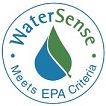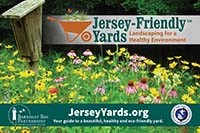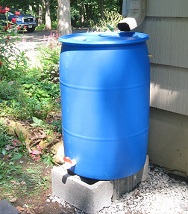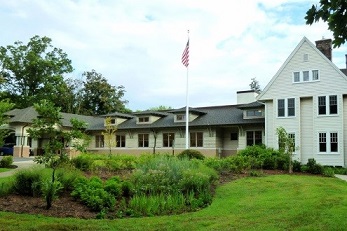How You Can Protect the Watershed
There are numerous ways you can protect the watershed
by implementing some measures to conserve water in and around your home.


Evaluate the ways you use water in your home. Check your faucets
to see if any are leaking. 3000 gallons of water per year can be
wasted from a leaking faucet or showerhead. Fix or replace them.
If the toilet is running, get it repaired since a leaking toilet
can waste more than 182,500 gallons of water per year. When replacing
fixtures and appliances (dishwashers and washing machines) look
for the USEPA’s WaterSense logo. This logo meets USEPA’s requirements
for optimal water savings. For more on the WaterSense Program
please visit https://www.epa.gov/watersense.

Using environmentally friendly products can help the watershed as well.
These products have less toxic chemicals in their ingredients,
which are not only safer for you, your family and pets, but also for
fish, wildlife and the environment. Look for the Safer Choice Logo,
which meets the USEPA’s criteria for safer cleaning products and
please visit https://www.epa.gov/saferchoice to learn more.
You can do a variety of things outdoors to help the watershed!
Don’t overwater your lawn. It only needs about 1 inch of water per week.
If you have a sprinkler system, consider installing a shut off device
such as rain and moisture sensors so you only use the water that is needed.
Make sure your system is not watering the drive, sidewalk or house, which
is wasting water. Your lawn and plants will benefit most when you water
early in the morning or in the evening when less evaporation occurs. The
water will penetrate the soil providing the roots with nourishment. Using
mulch around your garden beds helps to retain moisture in the soil.
Consider using soaker hoses or drip irrigation systems which provides
water where the plants need it the most, at their roots! Remember to
use hose nozzles that can be shut off and turn the hose off when not in
use. Don’t over fertilize. Use only what you need by testing your soil.
Too much fertilizer doesn’t help your plants and is bad for the watershed when
rains wash excess nutrients from your yard into our streams causing algal
blooms. New Jersey has a fertilizer law that establishes a time frame when
you can apply fertilizers to your lawn. To learn more about soil testing and
the fertilizer law please visit Rutgers New Jersey Agricultural Experiment
Station at http://njaes.rutgers.edu/garden/.

Better Yet, Go Native! Native plants have adapted to the conditions of the
local region and need less water and fertilizer. Once established, native
plants encourage pollinators and beneficial insects to your yard as well as
wildlife. These critters help increase food production and aid in pest
control. Make sure your plants are located in an area of your yard that
benefits them most. Don’t plant a shade loving plant in full sun or a plant
that likes dry conditions in a wet area. A native landscape saves you money
and helps the watershed by eliminating the need for fertilizers and pesticides,
and it’s easier to maintain. To learn more about native species and how to
landscape your yard for your region visit the Jersey Friendly Yards website
at http://www.jerseyyards.org/.

Rutgers Rain Barrel
Program, New Brunswick, NJ
Program, New Brunswick, NJ

Monmouth County Library, Ocean Township
from http://www.jerseyyards.org/.
from http://www.jerseyyards.org/.
Consider adding a rain garden or rain barrel to your yard. A rain garden
is a beautiful addition to your landscape and it collects stormwater from
your roof, drive and sidewalk, filtering out the nutrients and pollutants.
It allows water to infiltrate into the ground keeping excess water from
our streams and recharging our groundwater supplies. Rain barrels are placed
under a downspout and collects water from your roof. By collecting this water,
you can use it for your plants during times of drought as well as save money
by having free water for the rest of the growing season. You are preventing
excess water and pollutants from entering our streams, thus protecting the watershed.

Rutgers Rain Barrel
Program, New Brunswick, NJ
Program, New Brunswick, NJ
By making a few choices in saving water around you home and yard, you’re not
only saving money and time; you are helping the watershed by preventing
pollutants and excess water from entering our streams and waterways. You
are also enhancing your home and neighborhood by creating a healthy environment
for pollinators and wildlife. Thus preserving our watersheds for the future
and creating a sustainable community.


